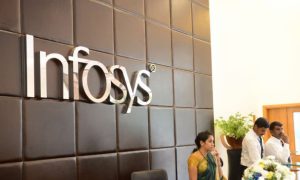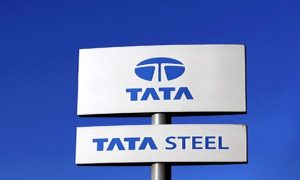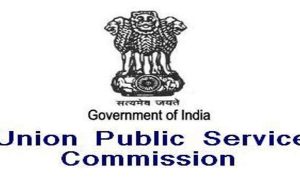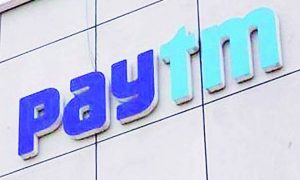HP CEO Enrique Lores says the cost actions of its ‘Future Ready’ plan will generate at least $1.4 billion in gross annual run rate structural savings by year-end fiscal year 2025
US tech giant HP CEO Enrique Lores has said the company will cut the size of its workforce in the next three years and expects to reduce it by 4,000 to 6,000 persons. He added that while these are difficult decisions, he is doing what is best for the company’s business.
“The cost actions of our Future Ready plan will generate at least $1.4 billion in gross annual run rate structural savings by year-end fiscal year ’25. They will allow us to mitigate near-term market headwinds, mitigate softness in the core businesses; and just as importantly, to maintain investments in long-term growth. As part of the actions we are taking, we will be reducing the size of our workforce over the next three years. We expect to reduce it by 4,000 to 6,000 people. These are the toughest decisions we have to make because they impact colleagues we care deeply about,” Lores said during an earnings conference call on Tuesday with analysts.
The decision by HP comes after other tech giants including Twitter, Meta and Amazon have also laid off a large number of employees, to cut costs.
This apart, Google’s parent company Alphabet also is reportedly gearing up to lay off about 10,000 “poor performing” employees, or 6 per cent of its workforce. The move is in response to pressure from an activist hedge fund, unfavourable market circumstances and the need to reduce expenses. Employees who receive low-performance ratings will be let go.
HP, which follows the November-October financial year cycle, reported a total revenue of $14.8 billion in the fourth quarter (Q4), which was down 11 per cent nominally or 8 per cent in constant currency. “This reflects macro headwinds in the market and is very consistent with what we described last quarter. We continue to focus on what we can control. We managed our pricing mix and cost to deliver non-GAAP EPS of $0.85, which is towards the high end of our previously provided outlook. And we delivered strong free cash flow of $1.8 billion, while returning $1 billion to shareholders. Very importantly, we also maintained our momentum in our growth portfolio. In short, we did what we said we were going to do last quarter,” Laures said.
Its personal systems revenue were $10.3 billion. That’s down 9 per cent in constant currency year-over-year, but up 2 per cent sequentially or 4 per cent in constant currency, including two months of Poly’s results.
Enrique Lores’ Full Earnings Call Transcript
Thank you, Orit, and thank you, everyone, for joining the call today. I’m going to focus my remarks on three key topics: First, I will recap our Q4 and full year results. Then I will discuss actions we are taking to position our business for the future, including a new three-year plan focused on structural cost reductions that will drive the next phase of our digital transformation and the investment in our growth businesses. And I will close by talking about our outlook for 2023.
Read More: PM-Kisan Scheme: Farmer groups demand hike in benefits, DBT for fertiliser subsidy
But let me start by setting some important context. It has now been three years since I became CEO. From the day I took over, my top priority has been to deliver long-term, sustainable, profitable growth while transforming our business for the future, and we have made important progress. We started by launching an aggressive plan to unlock value. We implemented a new global operating model that brought us closer to customers and helped us significantly reduce structural costs.
We initiated actions to rebalance profitability in our Print business. And we began to diversify our portfolio to capture more value per customer. We expanded into adjacent growth categories such as peripherals. We extended our services and solutions offering, and we shifted more of our business to subscription and contractual models. These changes helped us to improve our operational performance. They also position us well for the disruption caused by the pandemic, which we were able to use as a catalyst to accelerate our transformation.
And our track record over these past few years provides a window into what you can expect from us moving forward. We have proven to be resilient in the face of changing market conditions. We delivered strong free cash flow, controlled our costs and scaled our growth businesses. At the same time, we will continue challenging ourselves to do better regardless of the external environment, and there are areas where we need to do better.
When we see things that aren’t working, we will fix them, and we will embrace every opportunity to improve our performance because our customers, shareholders and other stakeholders deserve nothing less. You can expect us to take the same approach in 2023 and beyond.
Let me now turn to our results for the quarter.
Revenue was $14.8 billion, down 11% nominally or 8% in constant currency. This reflects macro headwinds in the market and is very consistent with what we described last quarter. We continue to focus on what we can control. We managed our pricing mix and cost to deliver non-GAAP EPS of $0.85, which is towards the high end of our previously provided outlook. And we delivered strong free cash flow of $1.8 billion, while returning $1 billion to shareholders. Very importantly, we also maintained our momentum in our growth portfolio. In short, we did what we said we were going to do last quarter.
Turning to our Q4 business unit performance. Personal Systems revenue were $10.3 billion. That’s down 9% in constant currency year-over-year, but up 2% sequentially or 4% in constant currency, including two months of Poly’s results. The Poly integration is going well so far with the business performing better than expected.
We continue to receive very positive feedback from the market about the opportunity ahead. We are well positioned to accelerate our peripheral growth, and we expect Poly to be accretive to non-GAAP operating profit and EPS in fiscal year ’23. Our PS operating margin was 4.5% in the quarter, below our long-term target range due to increased competitive pricing, particularly in EMEA. Still, we remain confident in the long-term trajectory of PS as we navigate near-term volatility in the market. The PS TAM remains above pre-pandemic levels, and we are making progress against our long-term strategic priorities.
This includes shifting more of our mix to high-value segments. In Q4, our Commercial business continues to account for more than 2/3 of our overall PS revenue. However, we are not satisfied with our PS market share results this quarter. We know we can do better, and we will. We see many opportunities to improve our execution and gain share in key segments of the market.
In Print, revenue was $4.5 billion. That’s down 7% year-over-year or 6% in constant currency, largely due to continued softness in the Consumer market, both hardware and supplies and supply constraints. That said, our operating margin of 19.9% was well above our target range, reflecting disciplined cost management and pricing. Our Commercial business made a good recovery during the quarter, with office hardware revenue growing double digits year-over-year and sequentially. This was offset by declines in home and supplies, both of which were in line with our expectations. We also made progress against our plan to rebalance system profitability and further reduce our reliance on transactional supplies. HP+ and Big Tank printers continue to become a larger portion of our portfolio mix, representing about 55% of our printer shipments. And we had another good quarter in Industrial Graphics and 3D, both of which grew revenue year-over-year and sequentially.
Now turning to the full year. Our Q4 results capped off a solid 2022 in the face of tough market conditions in the second half. Fiscal year ’22 revenue was $63 billion. That’s down 1% nominally and up 1% in constant currency. We exceeded our full year revenue target for our key growth businesses, each of which delivered double-digit organic growth. Collectively, they generated more than $11 billion in revenue. That’s $1 billion above our target and reflects the strong momentum we are building.
We delivered non-GAAP EPS of $4.08. That’s up 8% year-over-year and within our target range. We generated free cash flow of $3.9 billion, and we returned $5.3 billion to shareholders in the form of share repurchases and dividends. We also continued to advance our sustainable impact agenda. This is a key differentiator for our brand, and I am proud of the work our teams are doing to make it a competitive advantage.
This year, we were the only technology company globally to receive an A rating from CDP, one of the world’s leading NGOs dedicated to environmental sustainability reporting. And almost all the new printers, laptops, notebooks, displays and workstations we launched in 2022 included recycled materials. Sustainable impact will remain a key strategic priority moving forward.
Fiscal year ’22 also marked the completion of our three-year value creation plan, and we exceeded all the key targets we set. In addition to delivering on our financial commitments, the plan drove important investments in our future. Most notably, we invested in our digital infrastructure to begin replatform in the company. And we invested in both R&D and M&A to accelerate the growth of our businesses. These investments have strengthened our resilience and positioned as well for the volatile market ahead.
I now want to talk about what comes next because while we have delivered on our value plan, we are not done, and we have initiated the next phase of our transformation. Our ultimate goal is to create a Future Ready HP. Future Ready is our strategic framework that we are driving across the company. It has two primary objectives. One is to develop the portfolio and operational capabilities needed to drive sustainable growth. The other is to further reduce our cost.
Marie will talk more about the cost side of this transformation. Today, I am going to walk you through three key elements of our Future Ready plan, digital transformation, portfolio optimization and operational efficiency. They are also the major drivers of savings of the plan we are announcing today. I will start with digital transformation. We are continuing the process of digitizing the company. We plan to capitalize on the infrastructure investments we made over the past three years to simplify and accelerate many processes through automation and end-to-end management. For example, we are launching end-to-end initiatives that will enable faster conversion from lead generation to free cash flow.
Our digital transformation will also drive productivity, speed and quality of our execution across supply chain, customer support and go-to-market. In addition, our new digital backbone will enable us to scale key growth businesses by delivering new customer value propositions such as personalized services and solutions that allow us to capture more value per customer.
The second area of focus is on optimizing our portfolio. In the current environment, I believe it’s essential that we zero-in on businesses where we can drive significant competitive advantage and market leadership.
We have an opportunity to create a more focused and more growth-oriented line of businesses based on innovation that meets the changing needs of our customers. We also have opportunities to simplify our portfolio. For example, in Personal Systems, there is an opportunity to significantly reduce our number of unique SKUs. And we plan to significantly reduce complexity and cost in businesses where we don’t expect to achieve growth but can drive value.
A significant portion of the savings we generate is expected to be invested to drive innovation in our key growth businesses to increase the lifetime value of our customers. I’ll give you some examples. In hybrid work solutions, we intend to leverage the combined strength of Poly and HP to drive attach, while expanding in software and services to deliver differentiated hybrid work solutions for meeting rooms and home offices.
In gaming, we see significant opportunity to drive better collective experiences through both software and hardware. And we will create seamless experiences across PCs, displays and peripherals. Through our newly informed workforce services and solutions business, we will simplify IT management for customers through new Device-As-A-Service offering tailored for hybrid ecosystem. We will also expand our consumer services offerings beyond Instant Ink to include new areas such as paper and print hardware.
In Industrial Graphics, we will continue to lead the industry in innovation that drives that analog-to-digital transformation. And in 3D, we will continue to invest in our own 3D end-to-end printing applications and in our metals portfolio. And we expect these businesses collectively to continue growing organically double digits next year. The third area of focus I’m going to cover today is delivering operational excellence. We plan to continue to optimize our performance by driving efficiencies, simplifying organizational structure and removing unnecessary costs.
This work will build on our previous transformation initiatives to unlock new structural savings. We will be taking actions across the company to reduce our variable spend and structural costs. For example, in our Print business, we will further reduce our core fixed cost structure and align it to post-pandemic market sizing. And our consumer subscription offerings will allow us to be more efficient in simplifying our portfolio.
The cost actions of our Future Ready plan will generate at least $1.4 billion in gross annual run rate structural savings by year-end fiscal year ’25. They will allow us to mitigate near-term market headwinds, mitigate softness in the core businesses; and just as importantly, to maintain investments in long-term growth. As part of the actions we are taking, we will be reducing the size of our workforce over the next three years. We expect to reduce it by 4,000 to 6,000 people. These are the toughest decisions we have to make because they impact colleagues we care deeply about.
We are committed to treating people with care and respect, including financial and career services support to help them find their next opportunity. But while these are difficult decisions, we are doing what’s best for our business.
Let me now provide some color on our outlook for the year ahead. We expect to operate in a challenging macro environment during fiscal year ’23. In our guide, we are not assuming a significant economic recovery over the next 12 months. We expect our second half performance to improve, mostly driven by the cost-saving measures we are implementing.
We plan to maintain our current capital allocation approach, applying the same framework we have used during the last three years. We plan to continue to return at least 100 per cent of free cash flow to our shareholders over time unless opportunities with a better return on investment arise and as long as our gross leverage ratio remains under 2x. Given the volatility of the market, we believe it’s important to maintain a healthy balance sheet through prudent financial management. Therefore, we will temporarily reduce our share repurchase activity in the near term. We are confident in the actions we are taking to navigate current market conditions and drive long-term value creation. And today marks the start of the next phase of our strategic journey. While our growth trajectory may be uneven in the face of volatile market conditions, we remain confident to grow low single digits over the long term. Based on our track record over these past three years, you can count on us to deliver on our commitments.





































